Uses for a red-handled kitchen shears
The tool of choice for trimming bangs and cutting jerky meat
Dad’s home-made haircut
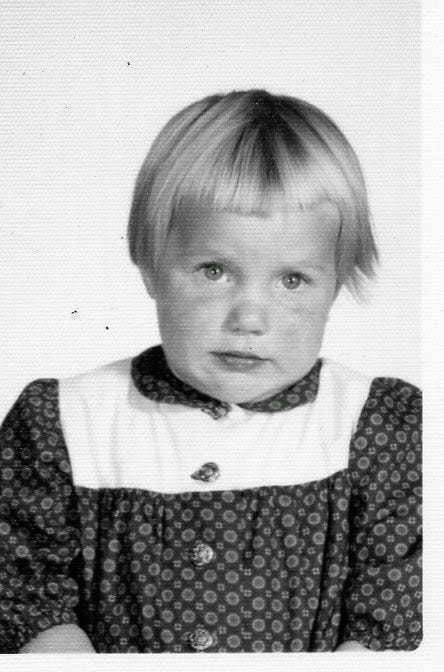
When I was growing up, moms and dads cut their kids' hair. Or at least that's the way it worked in my house.
When the time came for a trim, Mom, Renola Semerau Wegner, would start by affixing a length of Scotch® tape to my forehead at the exact spot where she thought the bottom of my bangs should be.
She would drape a bath towel over my shoulders, and I'd be instructed to sit very still — moving would likely cause her to poke my eye out with the sharp hair-cutting scissors, or so I was told.
I always shut my eyes – partly to keep the bits of bangs from collecting on my eyelashes and partly out of fear. Even at an early age, I valued my eyes.
If I wiggled too much, or fussed too much, Mom would call in my dad, Adrian Wegner.
Where Mom used a beauty shop scissors with long, narrow, sharp blades, Dad preferred a more substantial tool — his blunt-nosed, jagged-edged, red-handled kitchen shears. And the red-handled shears weren’t kept in the bathroom next to Mom's pink sponge curlers and the spare rolls of toilet paper.
Nope, they were hung up out in the garage next to Dad's refrigerator-cum-smoker, between his wire cutter and a needle-nosed plier.
When he wasn't using them to cut my bangs, Dad was using his man-kitchen shears to cut through chunks of apple wood or trim the burnt end off smoked meats.
I'd like to say I eventually learned how to sit still while Mom trimmed my bangs — thus avoiding Dad and his red-handled scissors, but the photographic record would seem to suggest otherwise.
Nearly every picture I have of myself through the age of seven or eight shows the tell-tale signs of a home-made haircut. The Notch. The Ramp. The Slip. The Bowl.
At some point, I must have decided enough was enough — or maybe it was Mom and Dad who made that decision. Regardless, for the rest of my childhood, my bangs were long.
Thinking outside the tape dispenser
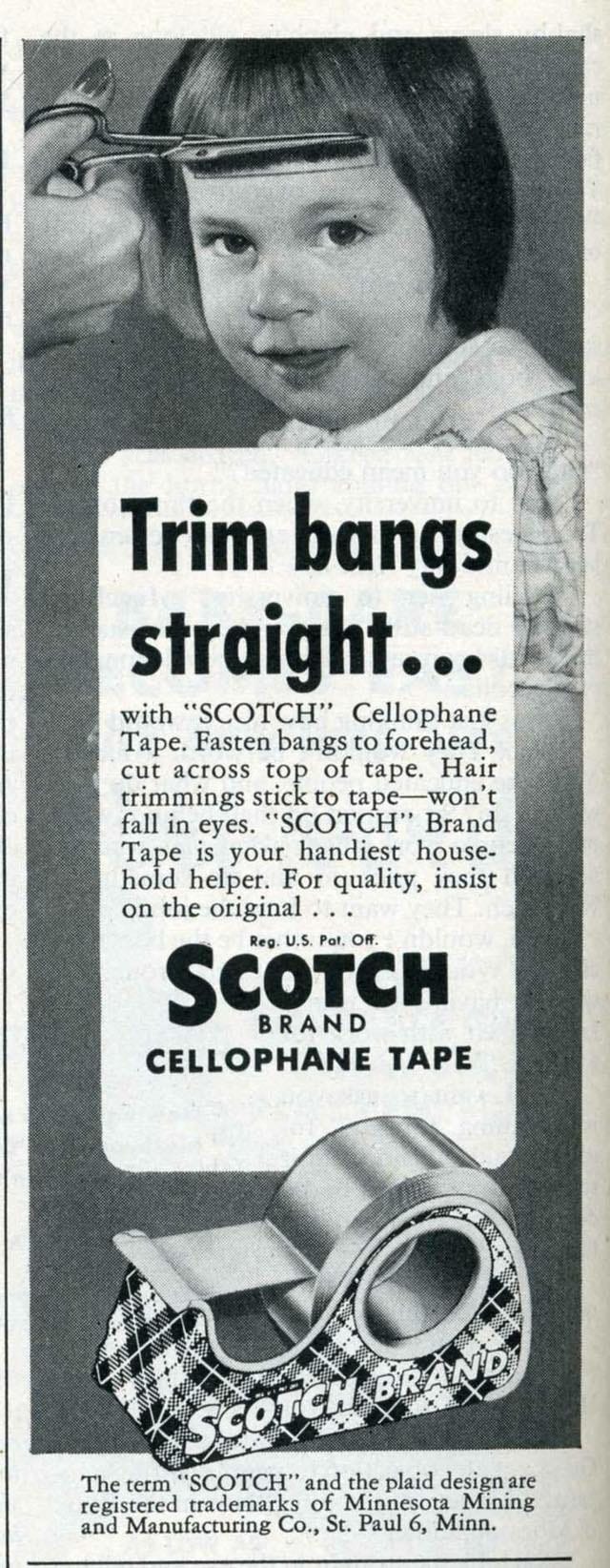
Richard Drew was already something of a wunderkind within in Minnesota-based 3M by 1929. Four years earlier, he’d inadvertently invented what we know today as masking tape, a happy accident which had quickly allowed the 27-year-old to climb the corporate ladder from research assistant to technical director of 3M's Product Fabrication Laboratory.
It was in that position that Richard and his team were tasked with creating a pressure-sensitive tape adhesive that would adhere to moisture-proof packing material. Cellophane had just been invented, and Richard saw it as a potential backing for his new adhesive. It turned out he was right, and on September 8, 1930, Scotch® Brand Cellulose Tape was sent out to the world and heralded as the ultimate household do-all.
“Almost daily, new ideas sprang up for using the tape to make old things do. It was used to mend book pages, sheet music, window curtains, and even small rips in clothing. Bankers used it to repair paper currency. Secretaries found it perfect for patching broken fingernails. Farmers discovered they could use it to seal cracked eggs. Housewives used it to cap canned milk, remove lint from clothing, secure bait on mousetraps, and repair cracked ceiling plaster. Goodyear used the tape to cover the inner ribs and beams of its dirigibles, creating an anti-corrosive shield.” 1
Sometime before I was born, 3M started advertising yet another use for their Scotch® Brand Cellulose Tape – cutting straight bangs, especially for children.
My folks, it turned out, were paying attention.
Please hit the ❤️ button at the bottom of the page to help this story reach more readers. And if you’re not already a subscriber, I’d love to have you join me. Thanks!
When the shears wasn’t trimming my bangs
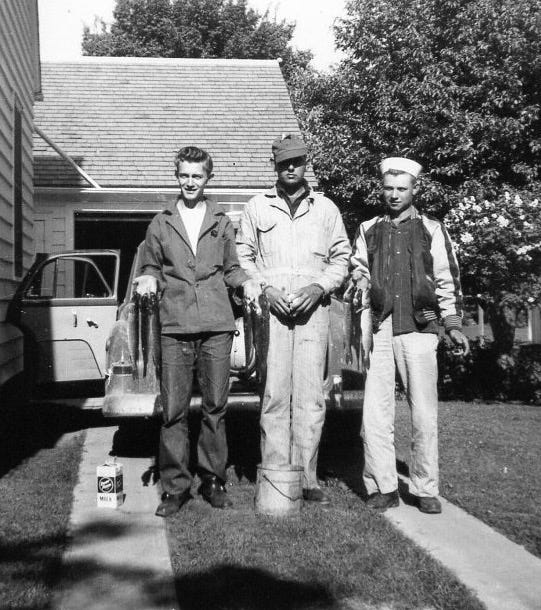
The smoker
Dad’s smoker — the one he used to cut the wood that smoked the meat he cut with the red-handled kitchen shears he used to trim my hair — began life as a 50’s style refrigerator. It was round and squat and the color of a Tootsie Roll, and sat in a place of honor in the garage, sharing space with our family’s bench seat Chevy truck and the push-behind snowblower that ate Dad’s index finger one winter.
As an Industrial Arts teacher and self-proclaimed tinkerer, Dad was both highly-skilled and enthusiastic when it came to playing in his garage, and turning a broken down fridge into a classic old-school DIY smoker was right up his alley. It’s likely Project Smoker was one of Dad’s many winter projects: During summers off from teaching, he and a buddy built houses, which left little time for handiwork.
Plus, I don't remember being enlisted as Dad’s helper, which also points to a winter project and my 7 pm school night bedtime.
Whenever Project Smoker was undertaken, it would have started with Dad deconstructing the squatty old fridge removing the original refrigeration components and installing a firebox at the bottom to hold the wood chips. He must have added some ventilation, too, because I don’t remember the garage ever filling with smoke — at least not from the smoker.
I do remember the interior of Dad’s smoker held both racks, probably the original racks from the smoker’s previous life, and also some hooks. Every so often Dad would break loose and decide to make homemade sausage, and that would be hung up and dangled like weird little meat nooses.
The recipes or at least the templates
Dad was an outdoor guy, a craftsman, a Renaissance man, and, based on his sideburns, something of a closet hippy, at least for a few years. Filled with everything from how to make a foot-powered lathe to how to brew dandelion wine in a Red Wing crock, the Foxfire series of books were definitely my dad’s guilty pleasure, and probably the source of at least some of the jerky recipes he used in his smoker.
I say recipe loosely. I remember Dad doing a lot of experimenting and improv when it came to what went into his jerky. For a while Dad’s target flavor profile was all about pineapple, but he also went through phases which relied heavily on brown sugar, teriyaki sauce and jalapeño peppers. And I’m pretty sure rock salt, coarse black pepper and Worcestershire sauce played a role in everything he made.
In addition to the spices and sauces, Dad loved experimenting with different woods, alone or in combination. He was always on the lookout for neighbors (or strangers) trimming their apple, pear, cherry or maple trees, and would fill the back of our truck with mesh sacks of pecan, hickory and mesquite wood chips whenever we headed south on I-35 for vacation.
When it came to what Dad smoked and turned into jerky, the sky was the limit. I have clear memories of him making jerky out of fish he’d caught off the end of our dock, and out of wild game he’d harvested while hunting – things like ducks, geese, pheasants and deer. When those weren’t available, or when my sister and I requested something a little less gamey, Dad would resort to store-bought meat – turkey breast, flank steak and even ground beef.
My favorite, however, was salmon jerky. We didn’t have it often, so it was a special treat. But I can still remember how delicious it was!
Venison Jerky
Ingredients: 1
1 ½ pounds venison steak
1 teaspoon liquid smoke
1/3 teaspoon each garlic powder & pepper
1 teaspoon each MSG and onion powder
¼ cup each soy sauce and Worcestershire sauce
Instructions:
Trim the meat of all possible fat. Slice steak about 1/8-inch thick pieces.
Mix remaining ingredients in a large jar. Blend well. Pour over meat, cover and marinate overnight in refrigerator, turning occasionally.
Drain well on paper towels and spread on rack in 125-140 F smoker for eight to 12 hours or until dry.
Store covered in cool, dry place.
Turkey Jerky
Ingredients: 2
1 1/4 pounds boneless thigh meat (breast meat is too dry)
1/3 cup soy sauce
2/3 cup water
1/8 teaspoon garlic powder
pepper
Instructions:
Cut meat into strips 1/8 to 1/4 inch in thickness and about 1 1/2 inches wide
Blend soy sauce, water and garlic powder
Marinate meat strips for 5 to 10 minutes
Place strips on rack and sprinkle with pepper
Heat smoker to 150 F and smoke for 8 ton10 hours (overnight is best)
Salmon Jerky
Instructions 4
Cut boneless, skinned fillets into strips 1/2 to 3/4 inches wide
Place jerky strips in brine solution (1/2 lb. salt per gallon of water) for 12 hours. Make sure the brine completely covers fish flesh. Hold brine temperature at 40 degrees or less to prevent bacterial spoilage,.
After brining, freshen the strips by immersing in fresh, cold running water for 30 minutes to an hour to remove excess salt.
Place strips on wire screens and allow them to dry on the surface turning at one hour intervals to keep from sticking to the screening. This process requires approximately two to three hours.
Dry and smoke the strips in smoker for about 12 hours at 150 degrees. The time the smoker will depend upon the amount of moisture in the flesh at the beginning of the process and the temperature of your smoker.
Check at regular intervals and remove the fish before it os too dry.
Store in air-tight containers.
And finally, Dad’s kitchen shears
After Dad died in 2001, we cleaned out the garage and hauled the smoker to the dump. And his red-handled kitchen shears were moved from its hook in the garage to the junk drawer in Mom’s kitchen. They would occasionally come out for a tough job, but for the most part, their time had passed.
A dozen years later, Mom passed away, and Dad’s shears went into a TBD box. No one wanted them but no one had the heart to add them to the Goodwill pile. I have no idea where they ended up.
But there are times when I’m in my own kitchen, digging around in the junk drawer next to the dishwasher looking for a replacement filter for the fridge, a set of earplugs or maybe a half-empty roll of Scotch® Tape, and I catch a glimpse of something red and worn, and I swear to all that is real that Dad’s red-handled kitchen shears are hidden in there somewhere, just waiting for me to give them something to do.
With six grandkids, I know someone needs their bangs trimmed.
Copyright 2025 Lori Olson White
Please hit the ❤️ button at the bottom of the page to help this story reach more readers. And if you’re not already a subscriber, I’d love to have you join me. Thanks!
Your turn and your culinary traditions
What’s the first meal you remember your dad cooking or baking? Describe the sights, smells, and sounds in the kitchen. Did he follow a recipe or cook from memory?
Did your dad have a signature dish or snack he loved to make? What made it special, and how did you feel when he made it?
Think of a time you and your dad prepared a meal together. What were you making, and how did the process unfold? Was it a regular routine or a rare occasion?
Was there a particular tool or piece of equipment your dad always used when cooking? Maybe an old grill, a favorite skillet, or even something unconventional—how did it shape his cooking style?
What’s a food or dish that instantly makes you think of your father? Is it something he made, ordered at a favorite restaurant, or maybe even a guilty pleasure?
Did your dad have a unique way of cooking or preparing food? (Smoking meat in an old fridge, using a special technique, etc.) Describe the method and what made it memorable.
Was there a special food-related tradition you shared with your dad? Maybe it was weekend pancake breakfasts, fishing trips followed by cooking your catch, or baking holiday cookies together.
Did your father pass down any family recipes or food-related stories? What’s the story behind the recipe, and have you continued the tradition?
Describe a memorable meal you shared with your dad. Where were you, what was on the table, and why does it stand out in your memory?
If you could cook one meal for your dad today, what would it be and why? Would it be his favorite dish, something he taught you to make, or a meal that holds a special place in your shared history?
In case you missed it
If stories at the intersection of food and family history are what you’re looking for, look no further than our archives! Here are a few of our favorites.
Culinary History is Family History is reader-supported. When you buy through links on our site, we may earn an affiliate commission.
End Notes:
1 American Chemical Society National Historic Chemical Landmarks. Scotch®Transparent Tape.
2 Venison Jerky, Kenosha News, Kenosha, WI, June 18, 1980.
3 Turkey Jerky #1, The Gault Herald, Gault, CA, November 1, 1973.
4 Salmon Jerky, The Gault Herald, Gault, CA, November 1, 1973.




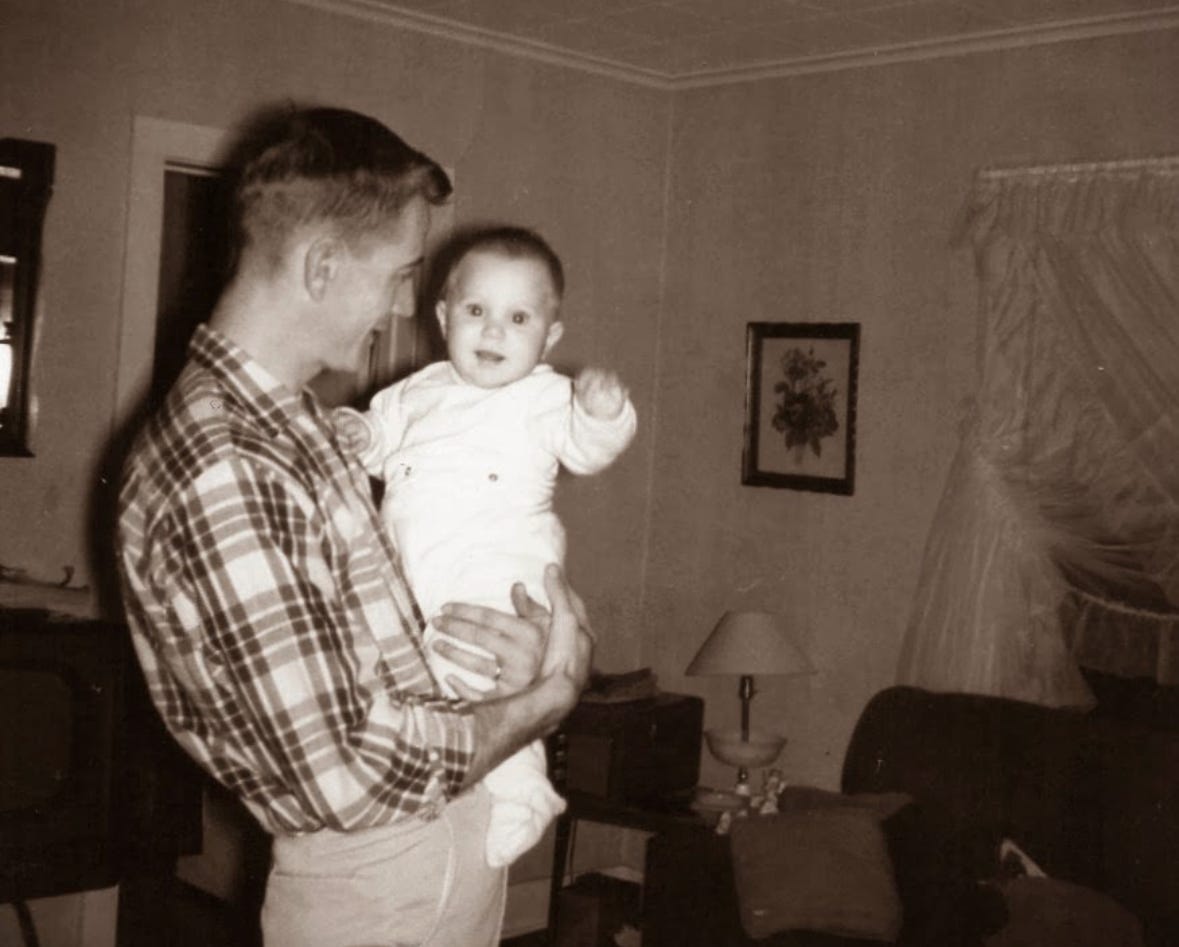
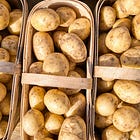

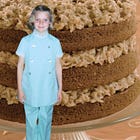
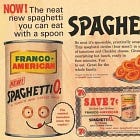
This is such a wonderful piece and a sweet tribute to your father. Yes, mom and dad cut my hair, too, but not with kitchen scissors, as I recall. Do you think the Scotch tape use for haircuts was more a thing in 3M country?
This is hilarious! I certainly had my share of bowl cuts.